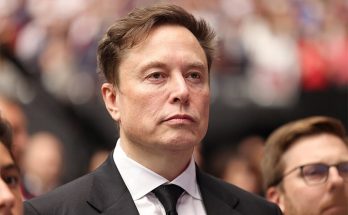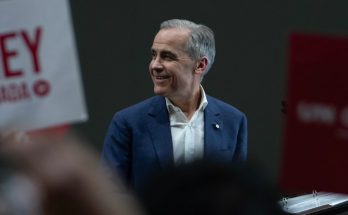Toronto/CMEDIA: Liberal Leader Mark Carney was reportedly framing on Saturday his fiscal and spending plan in terms of a crisis — “the biggest crisis of our lifetimes,” said that his plan sees higher deficits on new spending for defence, housing, infrastructure.
Canada’s economy and its sovereignty is being threatened by the United States with Pres Donald Trump’s efforts to fundamentally restructure the international trading system thereby rupturing the global economy.
“And to succeed in a crisis, you have to act with overwhelming force…In a crisis the private sector retreats, and the government…must lead and catalyze private investment,” Carney was reported saying in an announcement in Ontario.
A little while later, Conservative Leader Pierre Poilievre in his own announcement in British Columbia dismissed Carney’s plan as a “spending bonanza” that Canada can’t afford.
“Mark Carney launched his platform today, announcing $130 billion in new inflationary spending,” Poilievre said.
He said that Carney’s campaigns failed to adequately debate how much federal spending has contributed to inflation in Canada, and its alternatives either in this campaign or in the months leading up to it particularly during the COVID-19 pandemic to support households, business and other levels of government .
The debate focuses on the details of Carney’s $130-billion plan and what exactly Poilievre’s Conservatives would do differently.
The Conservative described Carney’s $130-billion plan includes money the federal government would lose as a result of a previously announced income-tax cut, at a projected cost of $22 billion over four years, is in fact the single most expensive item.
Another $12.5 billion would go toward cancelling the capital gains changes that were proposed last spring by Justin Trudeau’s government.
In a crisis, Carney has to justify how such amounts would be better put toward other things.
But not well positioned to criticize the cost of those two particular line items, Poilievre’s Conservative government’s pledge of also canceling the capital gains changes, and promise of an income tax cut would be more expensive than the one Carney proposed.
Carney’s plan contributing to actual spending contains three buckets to collect the majority of new funds— defence, infrastructure and housing.
Carney plans to spend $18 billion over four years for defence on a cash basis while a number of infrastructure initiatives — aimed at “nation-building” projects, trade corridors, digital infrastructure, health-care infrastructure, community infrastructure and projects in the Arctic — account for more than $20 billion.
While Build Canada Homes, a new agency focused on affordable housing, would receive $11.8 billion over four years, another $6 billion would go toward helping municipalities reduce development charges and build housing-related infrastructure.
A new tax incentive for the construction of rental housing would cost $4.1 billion.
The Liberals say that the additional spending would be partially offset by cost reductions and adds that with transfers to provinces and individuals would be off limits they aim to save $28 billion over three years.
The Liberals are also considering making changes to the government’s internal operations, including a cap on the size of the public service to cut “wasteful” spending.
“It’s a question of management and focus, and one of the things that I bring is experience in managing and focusing on budgets,” he said on Saturday.





